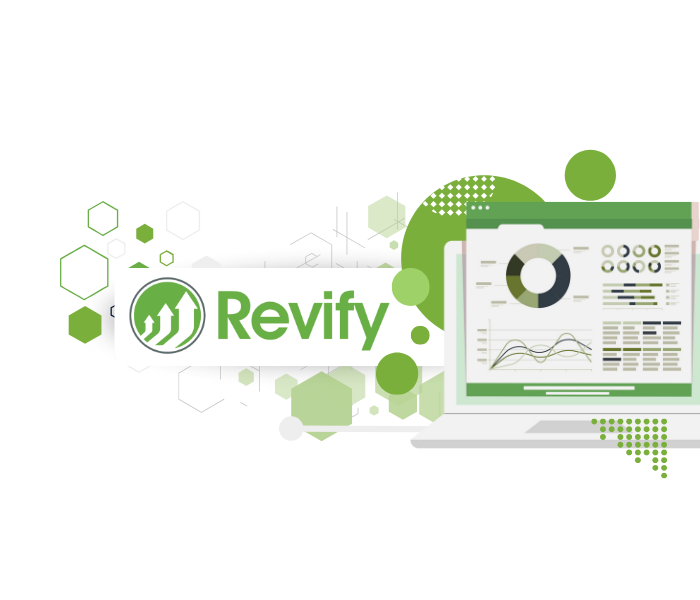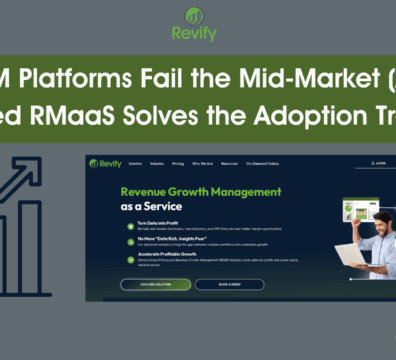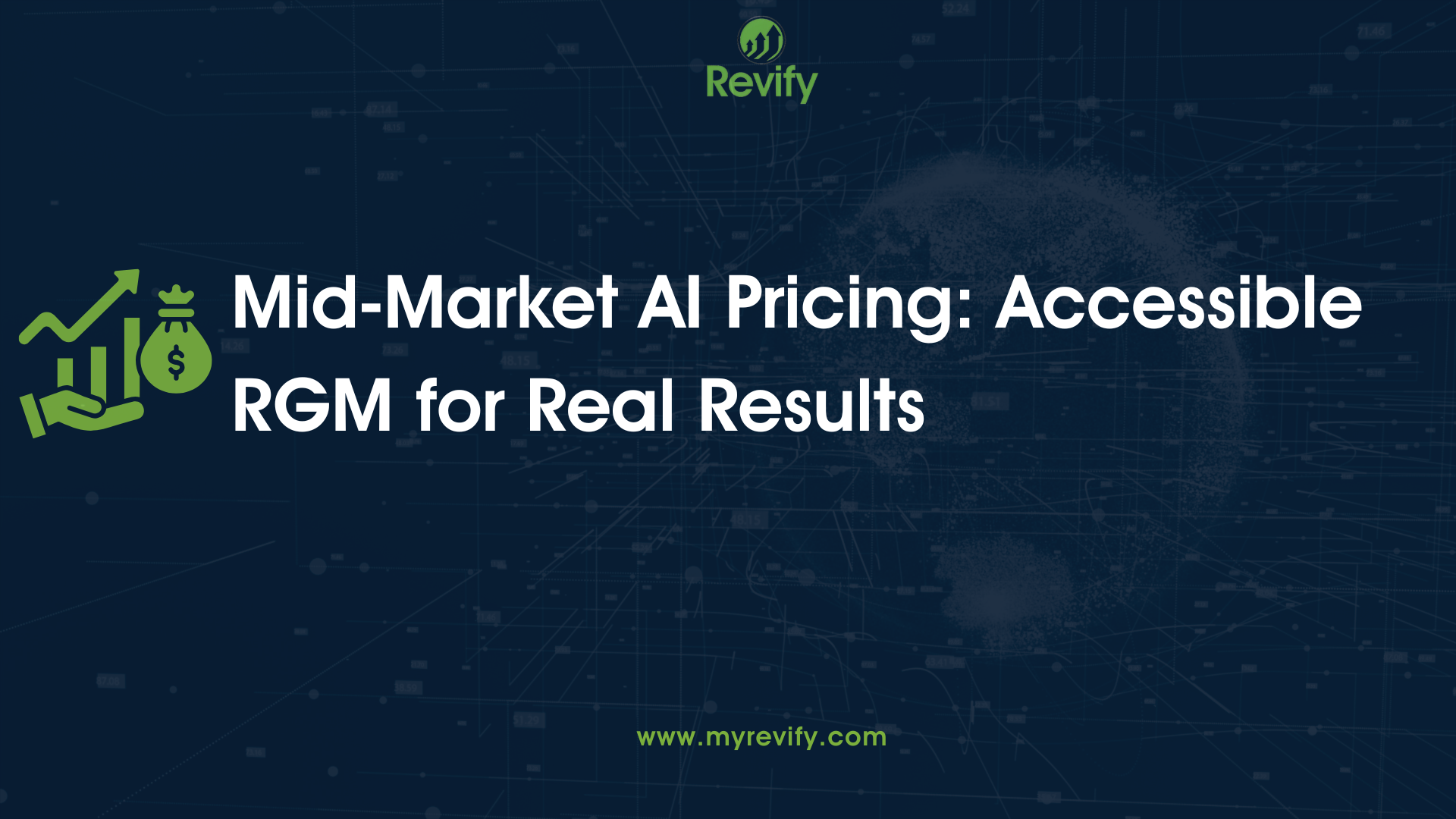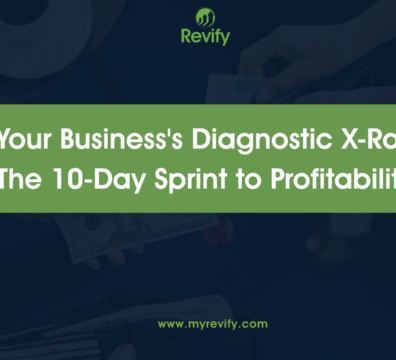How many times this week have your sales and finance teams had different opinions on the profitability of a single customer’s discount? For leaders in Industrial Distribution, this isn’t a rare occurrence; it’s a daily reality.
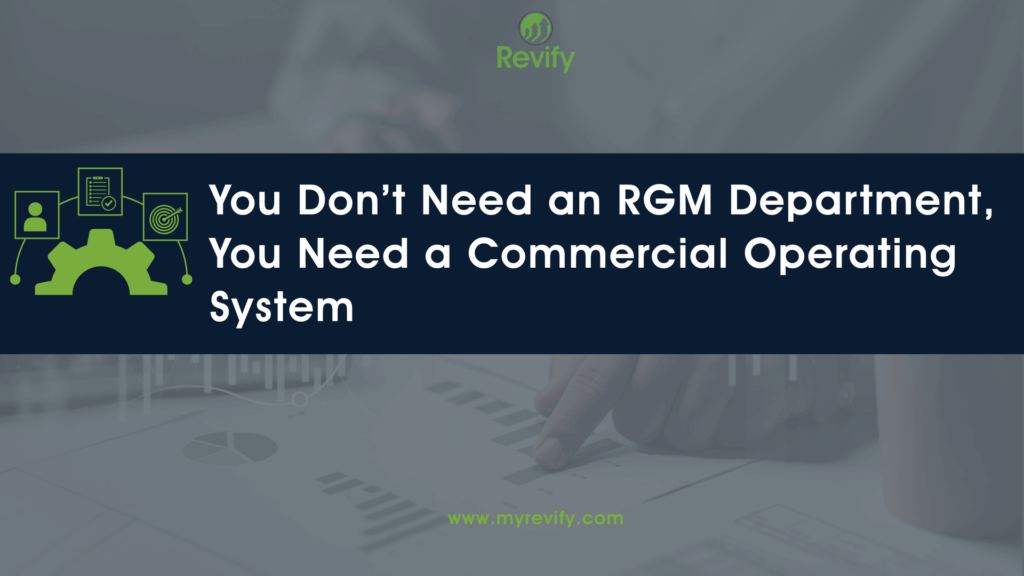
You’re working with tens of thousands of SKUs, fluctuating material costs, and complex rebate structures that differ for every account. In this environment, decisions based on habit and separate spreadsheets don’t just slow you down; they cost you money. This state of constant friction is what we call The Commercial Chaos Loop—a cycle where disconnected information leads to misaligned teams, which produces poor commercial outcomes and sends everyone back to their spreadsheets to prove a point.

Our recently launched 2025 Revenue Growth Analytics Maturity Report puts hard numbers to this problem. The study, which surveyed 158 commercial leaders, found a major disconnect between strategic intent and day-to-day execution, especially in distribution and manufacturing. For instance, a staggering 61% of companies still manage discounting manually, and 51% don’t use a price waterfall to see how list prices erode into actual net profit. Furthermore, while 56% of firms have set specific pricing goals, a mere 23% actually link those goals to sales compensation plans. This data confirms what many leaders feel instinctively: the chaos isn’t just a feeling; it’s a measurable execution gap that directly damages profitability. You know you’re leaving margin on the table, and the path forward seems either too complex or too expensive.
The common advice—to build a dedicated Revenue Growth Management (RGM) department—often doesn’t fit the mid-market. The better approach isn’t adding more headcount. It’s installing a new way of working: a Commercial Operating System that gives your current team the information and shared process needed to make good, profitable decisions together.
Why the Commercial Chaos Loop Happens
This cycle isn’t caused by a lack of talent. Your people are working hard. The problem is structural, coming from a disconnected way of operating that creates friction. To fix the issue, you have to understand its three main causes.
1. Separate Data and Competing Versions of the Truth The main cause of chaos is the lack of a common set of numbers. Your sales team lives in the CRM, focused on closing deals. Your finance team operates from the ERP, examining gross margins. When it’s time to decide on a price or discount, each team brings its own data to the table. This isn’t collaboration; it’s a battle of spreadsheets, where the “truth” depends on who built the report.
2. Conflicting Goals and Incentives In industrial distribution, this is a familiar problem. A sales rep, often paid on top-line revenue, has an incentive to sell high-volume items, even if they have thin margins. At the same time, a category manager is trying to improve the profitability of their product line. As our 2025 report shows, this isn’t just a hypothetical; about 29% of companies openly state that their sales and pricing incentives are not aligned. Without a shared system that shows the trade-offs, these two functions will always be in conflict.
3. The Limits of Spreadsheets The spreadsheet is the default tool for commercial analysis, but it’s not built for the scale and complexity of a modern distribution business. An Excel file can’t efficiently review millions of invoice lines to spot inconsistent discounting. It can’t run simulations to model the financial impact of a price increase. And it can’t group thousands of customers by buying behavior to identify who might be about to leave. When you rely on spreadsheets, your best analysts spend most of their time organizing data instead of finding useful information in it.
The Stakes: What Happens if Nothing Changes
Ignoring the Commercial Chaos Loop means accepting a slow decline in performance. Over time, the consequences build up:
- Margin Erosion: Inconsistent discounting and a slow response to cost increases lead to a steady loss of profit.
- Sales Team Burnout: Your best reps become administrators, spending more time getting internal approvals than talking to customers.
- Poor Inventory Investment: Without clear data on what’s profitable, you risk stocking the wrong products.
- Losing Ground to Competitors: While you’re debating internal data, other companies are using their information to win your best customers.
The Fix: Installing a Commercial Operating System
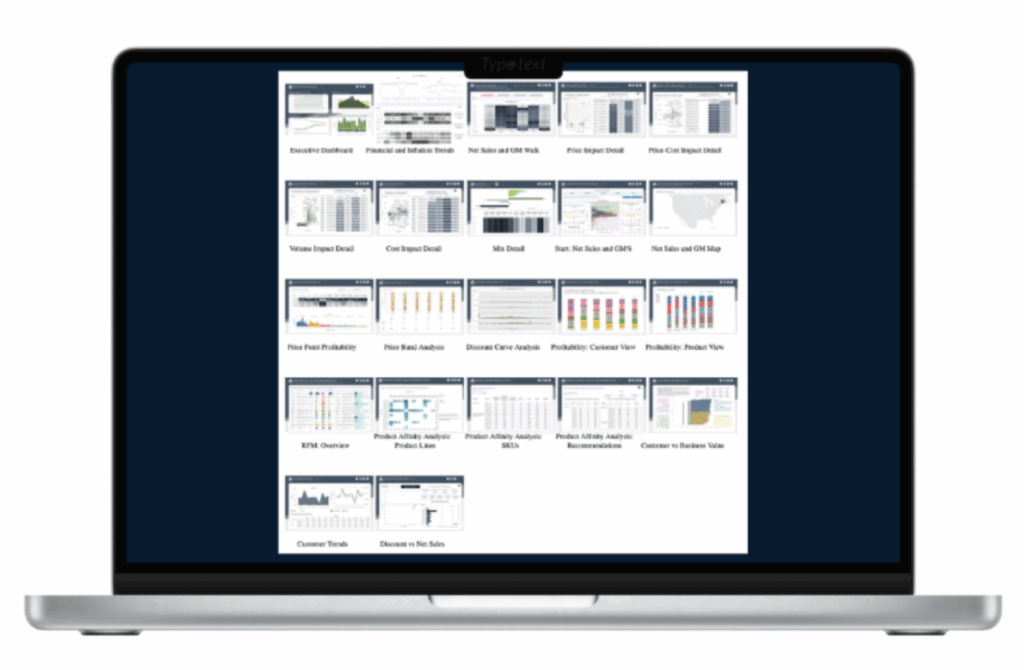
The Revify Commercial Operating System provides a comprehensive suite of analytics to break the Commercial Chaos Loop. With a single, shared view, teams can instantly access everything from Executive Dashboards and Price Impact analysis to Product Affinity and Customer Trend reports, turning disconnected data into a unified strategy for profitable growth.
To break the loop, you don’t need a bigger team; you need a better system. A Commercial Operating System is a framework of shared data, common work processes, and aligned goals that helps your teams work together.
Revify provides the tools and service to build this system. Our purpose is to make good commercial analytics available to mid-market distributors. We provide the full Revify platform, which takes in your various sources of data and presents it in a single, shared view for all your commercial teams.
This table shows the change in how work gets done:
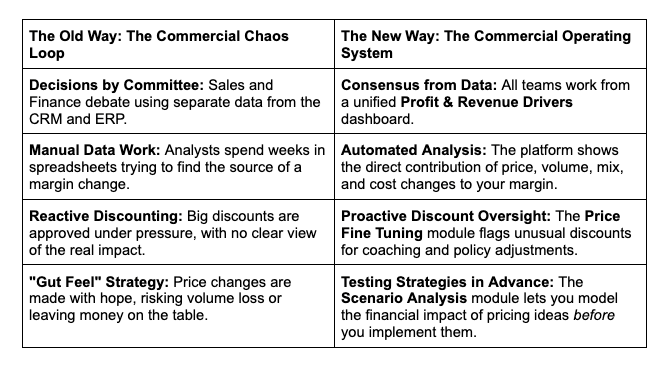
Answering a Few Common Questions
Adopting a new system always brings up fair questions. Here’s how we think about them.
- “Our data is a mess. We’re not ready.” This is a normal concern. Our process begins with an Assessment & Data Onboarding phase, which includes a Data Health Check report. We help you get started with the information you have now and give you a clear plan for improving it over time. Waiting for perfect data means you never get started.
- “We don’t have a data science team to run this.” You don’t need one. The platform is made for business users—people in sales, finance, and product management. Also, every subscription includes time with our Expert Consultants, who are experienced RGM professionals. They help you understand the information and decide what to do next.
- “This sounds like a long, expensive project.” We built Revify to avoid that model. We can have you up and running in 1-2 weeks, not 6-12 months. Our pricing is transparent and designed for mid-market companies, giving you the capabilities of a larger enterprise system without the high cost or long wait for value.
The Choice: Continue the Loop or Install a New System
The choice is between continuing with the costly and tiring Commercial Chaos Loop or installing a new system. Opting for a new system is a strategic decision to move beyond departmental silos and guesswork. By establishing a commercial operating system, you give your teams a common framework built on shared information and agreed-upon processes. This fundamentally changes how work gets done, unifying data from sales, finance, and operations so everyone is working from the same set of facts. The result is an organization that can make smarter, faster decisions that are consistently aligned with its profitability goals.
At Revify, our entire approach is designed to provide this capability. We help you build this system by combining a comprehensive suite of analytics modules—covering everything from Profit & Revenue Drivers to Customer Base Diagnostics—with the expert consulting needed to turn those insights into action. This combination of tools and guidance helps your company move from being reactive to being in control of its commercial strategy. If you’d like to see how this could work for your business, our specialists can walk you through the details and help you diagnose your own Commercial Chaos Loop.

